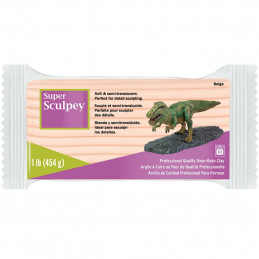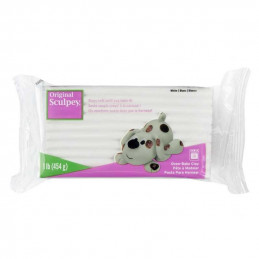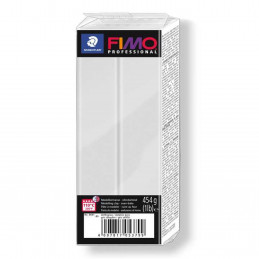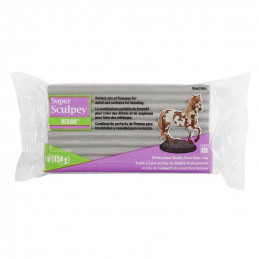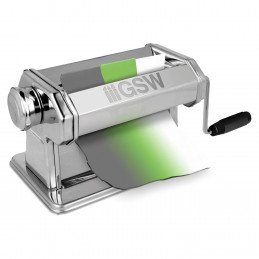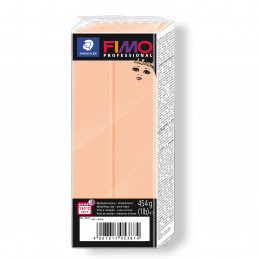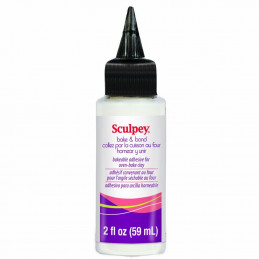- There are no more items in your cart
- Shipping
- Total €0.00
- Paint
- Model Paints
- Flexible Paints
- Auxiliary Paints
- Weathering and Pigments
- Water effects
- Miniature Paint Brushes
- Paint Accesories
- Texture paint
- Refillable paint pen
- Airbrushing
- Paint Rack
- Paint Spray
- Hobby Tools
- Hobby Tool Kit
- Modeling Tools
- Engraving tools
- Cutting Tools
- Texturing Tools
- Rolling Pins
- Static Grass Applicator
- Leaf Punches
- Photo Etched Tools
- Abrasive Products
- Thermoforming Machines
- Hobby Drill
- Modeling tweezers
- Clamps and Miniature Holders
- Putties and Materials
- Scenery and Resin
- Resin items
- Resin Busts and Figures
- Static Grass
- Grass Tufts
- Basing Sets
- Miniature Basing Materials
- Snow Modeling
- Hobby Sand
- Wargaming mats
- Wargaming Terrain
- Other Scenery
- Letters and Numbers for Modelling
- Photo Etched Model Parts
- Hobby Accessories
- Miniature bases
- Movement Trays
- Neodymium magnets
- Magnetic Sheet
- Modeling glue
- Wood bases
- Acrylic Display Blocks
- Lighting and electronics
- Miniature Carry Case
- Hobby Lamps
- Photography
- Board games
- Waterslide Decals
- Miniature Display Cases
- SteamPunk and Beads
- Cosplay shop
- Wholesaler
- 3D printers
- OUTLET Offers
- Merchandising
- New Products
Polymer Clay
Reference: 4007817053836ES
Fimo Professional 454gr - Dolphin Grey
Fimo Professional 454gr for sculpting and molding.
Reference: 715891114421
Super Sculpey Clay - Medium Blend 454 gr.
Super Sculpey Medium Blend 454 gr.
Reference: 8435646509259ES
Polymer Clay Pasta Machine
Polymer Clay Pasta Machine | Clay pasta maker
Reference: 4007817096888ES
Fimo Professional 454gr - Cameo
Fimo Professional 454gr for sculpting and molding.
Reference: 8436554368389ES
Brand: Green Stuff World
Sculpey Original 55 gr.
Super Sculpey Original 55 gr.
Reference: 8436554366958ES
Super Sculpey Medium Blend 55 gr.
Super Sculpey Medium Blend 55 gr.
What is polymer clay?
Polymer clay or also called oven bake clay, is a type of moldable synthetic material similar to plasticine that is very versatile and does not dry out under normal conditions. It is widely used in crafts and art and allows us to model and sculpt any type of figure or accessory for our miniatures. It is mainly composed of PVC polymers (polyvinyl chloride), a pigment to give color, and a plasticizing oil that gives it flexibility. It is known for its malleability, as it can be easily molded with hands or tools, and hardens when heated in a domestic oven or specialized oven at a relatively low temperature.
They can be molded, sculpted, cut and rolled, and manipulated into any shape we need. They do not shrink after baking and do not air dry. They can be found in different colors and finishes and can be sanded, polished, carved, as well as painted with any type of paint. As they can be manipulated as many times as we want without hardening, they are ideal for both beginners and professionals.
Where to buy cheap oven bake clay for modeling?
You can buy cheap oven bake clay online for modeling in Green Stuff World, your modeling and crafts store with a wide range of products, you can find all kinds of putties for sculpting, modeling pastes, and of course your cheap polymer clay so you can get started today in the art of modeling.
How to work with polymer clay?
Working with polymer clay is a creative and rewarding activity that offers a wide variety of possibilities. Here is a detailed description of how to work with this material:
- Preparing the space and materials: before beginning, it is important to prepare the work area and gather the necessary materials. This includes this material in the desired colors, modeling tools such as rollers, cutters, molds, and anything else needed for the specific project.
- Kneading: The presentation of the product is usually hard blocks, so it is necessary to knead it to soften it and make it more malleable. This can be done with your hands, a Polymer clay Machine, or with a smooth rolling pin on a clean, and smooth surface. It is important to work the oven bake clay enough to remove any air trapped in it.
- Modeling: Once it is soft and pliable, modeling can begin according to the desired design. This may involve sculpting shapes, embossing, stamping textures, or using molds to create specific shapes.
- Detailing and finishing: With finer modeling tools, details can be added to the piece, such as lines, textures, or small shapes. This is a creative stage where you can experiment with different techniques to achieve the desired effect.
- Baking: Once the piece is finished, it should be baked in a domestic oven or a specialized kiln at a specific temperature according to the manufacturer's instructions. This process will harden the baking clay and turn it into a durable and resistant material.
- Cooling and final finishing: After firing, the piece should be allowed to cool completely before handling. Once cool, it can be sanded, polished, painted, or varnished as desired to achieve the desired final finish.
- Storage: Anything that has not been baked should be stored properly to prevent it from drying out. It is recommended to store it in airtight bags or wrap it in cling film to keep it fresh and malleable.
It is important to experiment and practice to become familiar with its characteristics and handling techniques, with practice, you can create increasingly elaborate and refined pieces.
How to soften polymer clay?
To soften polymer clay that has become hard or firm, there are a few methods you can use:
- Kneading: Knead with your hands. Applying pressure and heat with your hands will help to soften it. This method is effective for small quantities or when the material is not too hard or firm.
- Rolling: If it is too hard to knead by hand, you can roll it out with a rolling pin. Place it between two sheets of waxed paper or plastic wrap to prevent sticking, then roll it several times until it softens. Fold and roll several times to evenly distribute the heat and pressure.
- Use a pasta sheeter or pasta machine: If you have a pasta machine, you can run it through the rollers several times, gradually adjusting the thickness. This process helps to soften and condition it evenly.
- Adding softening agents: You can add a small amount of petroleum jelly for modeling, or other softening agents such as mineral oil, or baby oil to help restore its flexibility. Knead it all together until the mixture becomes pliable again.
- Heating: Heating it slightly can also help to soften it. You can warm it by putting it in a plastic bag and immersing it in hot water for a few minutes. You can also use a hair dryer on low heat to gently warm it while you knead it.
Remember to start with small amounts of softener and gradually add more as needed to prevent it from becoming too soft or sticky. It is important to monitor its consistency as you work to achieve the desired softness.
What is the best brand of polymer clay?
It will depend on the uses you want to give them and what you are looking for at any given moment. To work with texturizing rollers we recommend Super Sculpey Beige as it has an optimum intermediate hardness for its manipulation. The Fimo brand also has a wide variety of options such as Fimo Professional or Fimo Soft with intense colors.
The two most popular types of oven bake clays that you can buy, are as follows:
Sculpey
This name also comes from a very well-known brand in the United States. Within it, we can find different types, such as:
- Original. It is soft, smooth, and flexible and can be easily handled. Once it is baked, it can be sanded, drilled, carved, and painted. Although it can be used independently, it is best mixed with the Super Sculpey version.
- Super Sculpey Beige is the softest of the 3 Super Sculpey's. Super Sculpey Blend is gray with a hardness intermediate between beige and Super Sculpey Firm. Super Sculpey Firm is not recommended as it tends to get very hard. If you are looking for a hard Super Sculpey, it is better to choose the Blend option, which is often close to Sculpey Firm, besides having the same gray color.
- Premo Dry which does not need baking to harden. It dries at normal temperature.
- And others like: Sculpey Soufflé, Sculpey III, Sculpey Bake and Bon and Sculpey Premo.
Fimo
Actually, it is not a type of oven bake clay, but a brand that has been so recognized and famous that its name has been used to talk about polymer clays. They can be found in packages ranging from 56 to 454 grams, and there is even a liquid version. Within these ranges, there are several types:
- Fimo Air. It does not require an oven since it hardens in the open air. It is composed of natural substances and cellulose fibers. After 24 hours it dries completely, although the resulting pieces are fragile.
- Leather. It is very flexible and has a particular texture, a bit grainy, but with textile fibers that give it elasticity. It creates a very realistic leather effect.
- Fimo effect. It is flexible and very soft and allows you to create effects of materials such as pearls, shiny, pearly, and metallic, among others.
- Fimo Soft. This is considered the right range for beginners, as it is very easy to mold and pleasant to work with, with no odor, and at a very affordable price.
- Fimo Professional. This, as its name indicates, is indicated for professionals or amateurs, and experts, as it is more difficult to handle, but provides a hardness that prevents breakage of the creations once it has been baked in the oven.
How to bake polymer clay?
Each type of polymer clay has a specific baking time that is indicated on the product packaging. In any case, there is a general rule for baking any type that usually works with all of them: just put them in the oven at 130º for 15 minutes. Baking at a low temperature ensures slow and safe baking, and also considerably reduces the risk of burning or overbaking the pieces.
You can place it on a piece of domestic aluminum foil, or even on a DM wooden base or pedestal, which will not burn at these temperatures. If the curing time is too long, the surface could burn, change color, and become more fragile.
How to glue uncured polymer clay?
Uncured polymer clay can be glued to other already cured ones using specific adhesives offered by each brand, such as Sculpey Bake and Bond, or simply by putting a little modeling Vaseline between the 2 pieces we want to join.
It is not advisable to use cyanoacrylate-based instant adhesives if the piece is going to be baked again since it would surely burn creating a black quite ugly look and could cause some hives or even skin irritation.
Can you paint polymer clay?
Polymer clay is very versatile and can be colored before hardening by adding a few drops of acrylic inks or even earth pigments during the kneading and conditioning process to create a wide range of tones and effects.
Once it has been baked and hardened, the best type of paint for its low toxicity and simplicity of use would be acrylic paints, acrylic inks, and dipping inks from Green Stuff World.
Adding earth pigments for coloring as they are natural dyes can add more subtle and organic tones. They can be mixed directly during the mixing process and become part of the mixing process allowing us to create unique and natural color effects.
It is important to keep in mind that when adding color, a uniform mixture should be ensured to avoid streaks or stains from insufficient mixing. In addition, it is advisable to test colors in small quantities before mixing large batches to ensure that the desired shade is achieved.
Experimenting with different coloring techniques can open up new creative possibilities, allowing artists to customize their creations and express their unique style.
Does polymer clay dry out?
No, they will never air dry as they are designed to be baked and cured in a domestic oven. For this reason, it is ideal for beginners who don't have to worry about the material going bad.
However, it is best stored in a bag or box provided by the manufacturer to reduce evaporation of its oils, and whenever possible in a cool, dry environment, such as a refrigerator. The warmer the storage environment, the harder the material will become. Heat is not good for this type of product.
What do I need to start working with oven bake clay?
In addition to polymer clay, you can use any tool that allows you to create a texture and model with some precision, such as a toothpick. However, there are specific tools for working with polymer clay that will enhance your experience.
You will probably need a silicone mat, smooth or textured roller, silicone molds, metal tools with many different tips, silicone-tipped brushes, and above all a conditioning laminating machine. These machines are adapted dough-cutting machines and really reduce the kneading time considerably. They are so easy to use that even a child could use them.
Polymer clays do not dry out over time, but they do get harder if they are not used regularly so it is increasingly difficult to condition them to work with them. Adding a little bit of sculptor vaseline to recover some of the oil that may have been lost over time is a popular trick.
What can be done with polymer clay?
It is an extremely versatile material that lends itself to a wide variety of creative projects. Here are some ideas on what can be made:
- Jewelry and accessories: This material is very popular for making all kinds of jewelry, such as earrings, necklaces, bracelets and rings. It can be molded into a variety of shapes, textures, and patterns, and can be combined with other materials such as beads, wires, and leather to create unique, custom pieces.
- Figurines and sculptures: Its malleability makes it ideal for sculpting figurines and sculptures. From small decorative figures to more elaborate sculptures, it allows artists to create a wide range of shapes and styles.
- Home Decor: It can be used to create a variety of decorative items for the home, such as picture frames, coasters, bowls, trays, and wall decorations. Its ability to be shaped and decorated makes it ideal for custom decorating projects.
- Ornaments and gifts: You can make Christmas tree ornaments, refrigerator magnets, key chains, and other small personalized gifts. These are great options for holiday gifting or as personalized gifts for friends and family.
- Covering and decorating objects: can be used to cover and decorate a variety of objects, such as mirror frames, bottles, storage boxes, and more. You can apply it in thin layers or create intricate textures and designs to personalize your everyday objects.
In short, it offers endless creative possibilities and is an excellent material for art and craft projects of all ages and skill levels. Its versatility and ease of use make it a popular choice for a wide range of creative applications.
Polymer clay ideas
In the world of crafts or DIY there are thousands of things that can be made with these materials, and here is a list of polymer clay ideas:
- Ceramic spoons: these materials are ideal for beginners and can add a touch of personality to your everyday tableware, changing the stainless steel spoons for handmade ceramic spoons.
- Handmade mug with spiral technique: This option is perfect for those who want to try a different method without the need for a potter's wheel. It is easy and adaptable for people with no previous pottery experience.
- Teapot and cup set: Creating a teapot and cup set is a more advanced project that allows you to personalize your dinnerware, although it requires a little more experience and some tools.
- Ceramic plate: Dishes are another project that can be made on a potter's wheel and can add character to your everyday dinnerware.
- Modeling a snake: This project is great for beginners and allows you to learn about properties.
- Earrings and beads: Perfect for creating unique and affordable accessories, such as earrings and beads, that can add a touch of style to your outfit.
- Lettering and lettering: Lettering is a creative way to decorate signs, tables, or artwork, and allows artists to explore their creativity.
- Miniature animals: From birds and butterflies to food and fantastical creatures, these materials are perfect for creating detailed ornaments and decorative objects.
- Cartoon masks and sculptural elements: Masks and other sculptures allow artists to explore their creativity and technical skills.
These are just a few of the many creative possibilities they offer. With a little practice and experimentation, the options are endless!
Is polymer clay toxic?
It is generally considered non-toxic when used as intended. However, like any crafting material, it's important to follow safety precautions and handle it properly.
Most brands are composed of PVC (polyvinyl chloride) resin and a plasticizer, which are not inherently toxic. When baked at the recommended temperatures, it undergoes a chemical reaction that transforms it into a solid, durable material. The fumes released during baking are minimal and typically not harmful if proper ventilation is provided.
However, some precautions should be taken:
- Avoid ingestion: While it is non-toxic, it should not be ingested. Always wash your hands thoroughly after handling this type of material and avoid eating or smoking while working with it.
- Proper ventilation: When baking it, ensure adequate ventilation to prevent the buildup of fumes. Use a dedicated oven or toaster oven for baking clay to avoid contaminating food.
- Skin sensitivity: Some individuals may experience skin irritation or allergic reactions when in contact with certain additives or pigments. If you have sensitive skin, consider wearing gloves while working with clay.
Overall, when used responsibly and with proper safety measures, it is a safe and enjoyable material for crafting.
Is polymer clay food safe?
Polymer clay is not considered food-safe. While it is non-toxic when cured properly and used as intended for crafting purposes, it is not intended for food contact.
When it is cured in the oven, it undergoes a chemical reaction that transforms it into a solid, durable material. However, this process does not make it suitable for food use. It is not designed to withstand the high temperatures and conditions typically encountered during food preparation, cooking, or storage.
Additionally, some brands may contain additives, pigments, or coatings that are not food-safe. These substances could potentially leach into food if it were used for food-related purposes.
It's important to use dedicated tools and equipment for handling it and to avoid using them for food preparation or storage. If you want to create items like bowls or dishes for decorative purposes, they should not be used for holding food or beverages.
Not what you were looking for? You may be interested in our plasticard and in our epoxy resin.







